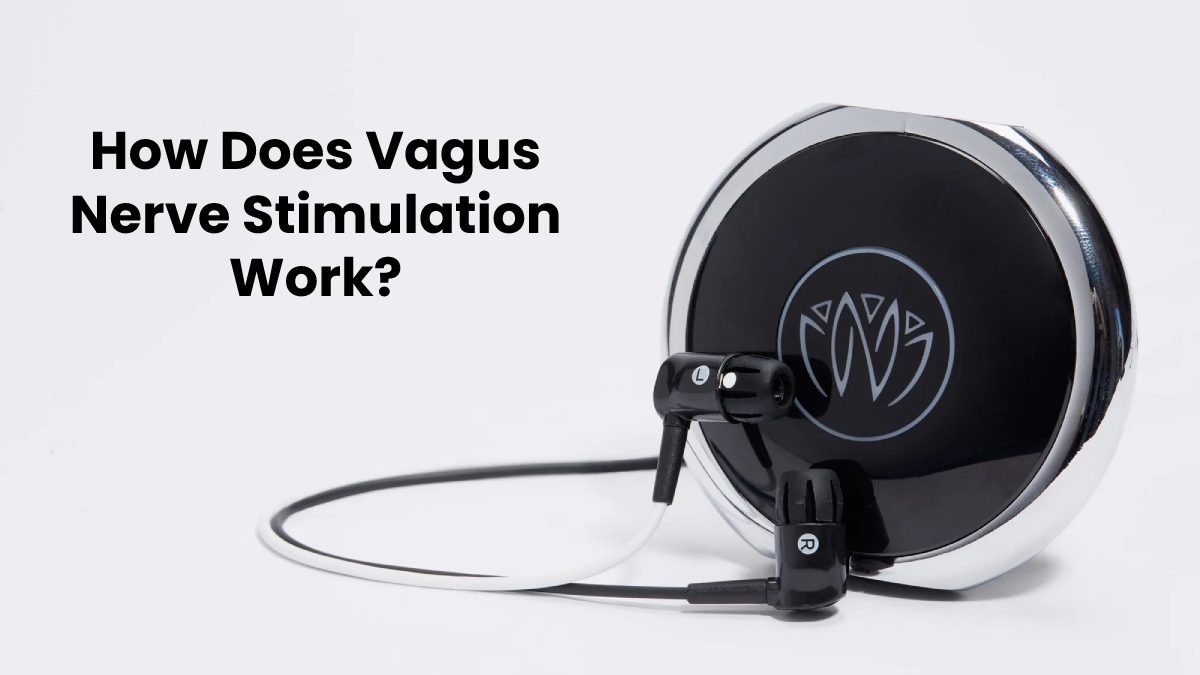How Does Vagus Nerve Stimulation Work? – Vagus nerve stimulation (VNS) is a treatment used for various conditions like epilepsy and depression. It involves sending electrical signals to the vagus nerve, which is a large nerve that runs from the brainstem down to the abdomen. This stimulation can help regulate the activity of certain brain areas and improve symptoms.
The Xen by Neuvana device is a wearable device that delivers vagus nerve stimulation in a non-invasive manner. The device consists of headphones that trigger the vagus nerve through the ear and sends electrical signals to stimulate the vagus nerve. The headphones connect to a handheld device that wirelessly connects to your phone, giving you access to the Neuvana app.
Within the app, you can customize your sessions, choosing from your favorite music, sounds, sensations, and other options to ensure your vagus nerve stimulation process is as enjoyable and effective as possible! Better yet, the Xen device is portable and can be used anywhere, making it a convenient way to experience the benefits of VNS.
Now that you know about the Xen device, let’s get into other topics surrounding vagus nerve stimulation you might be curious about!
Table of Contents
The History of Vagus Nerve Stimulation
VNS has been used to treat various conditions for centuries. But interestingly, many people who were using this technique might not have realized what was happening. For example, chanting has been a relaxation method for centuries. This repetitive sound activates and “massages” the vagus nerve, which can help calm and relax the body.
On that note, yoga is another method that has long been used to stimulate the vagus nerve. This is because many poses and breathing exercises involved in yoga help increase blood flow and heart rate variability, both of which are associated with increased vagal activity.
And for one last example, cold exposure. You might be familiar with cold plunges which have become increasingly trendy, although cold exposure has been used for ages. This is because exposing the body to cold temperatures can help stimulate the vagus nerve, which can also decrease inflammation.
While these methods are not as direct as the Neuvana Xen device, they nonetheless show that humans have intuitively understood the benefits of stimulating the vagus nerve for centuries!
These techniques share one common goal: stimulating the vagus nerve and promoting relaxation. And while they might seem unrelated, they all work towards this goal differently.
How Vagus Nerve Stimulation Works
Now that we’ve looked at some of the history behind vagus nerve stimulation let’s get into how it actually works.
As we mentioned, vagus nerve stimulation involves sending electrical signals to the vagus nerve. These signals help regulate the activity of specific brain areas and improve symptoms.
For example, studies have shown that vagus nerve stimulation can help to improve symptoms of depression. This is thought to be because vagus nerve stimulation can help increase blood flow and heart rate variability, both of which are associated with increased vagal activity.
In addition, vagus nerve stimulation has been shown to help with other conditions like epilepsy, migraines, and even Alzheimer’s disease. This is because the electrical signals from the vagus nerve can help modulate activity in some parts of the brain involved in these conditions.
So how does the Neuvana Xen device work? As we mentioned, the Xen device consists of headphones that deliver electrical signals to stimulate the vagus nerve through the ear. These signals then travel to the brain and help modulate certain areas’ activity, including the gastrointestinal system.
The Neuvana Xen device is a safe and effective way to experience the benefits of vagus nerve stimulation. And because it is portable and can be used anywhere, it is a convenient way to get the vagus nerve stimulation you need!
Types and Methods of Vagus Nerve Stimulation
We’ve talked about the Xen device, cold exposure, yoga, and chanting. But let’s talk a bit more about two primary types of vagus nerve stimulation.
- External vagus nerve stimulation or transcutaneous vagus nerve stimulation is when the vagus nerve is stimulated from outside the body through the skin. This can be done with a device like the Neuvana Xen or through methods like cold exposure or yoga.
- Internal vagus nerve stimulation is when the vagus nerve is stimulated from inside the body. This is typically done with a surgically implanted device that sends electrical signals to the vagus nerve. This more invasive method is commonly used to treat medical conditions rather than to promote overall well-being the way tVNS can.
So whether you use a device like the Neuvana Xen or try a more traditional method like yoga or cold exposure, you can experience the benefits of vagus nerve stimulation!
Potential Applications for Vagus Nerve Stimulation
As we mentioned, VNS is, for many people, effective in treating a variety of conditions.
They include:
- Epilepsy: VNS has been shown to reduce seizure frequency in people with epilepsy.
- Depression: VNS is effective in treating depression, primarily when other treatments have not worked.
- Migraines: VNS is effective in reducing the frequency and intensity of migraines.
- Enhancing recovery: VNS has been shown to help people recover more effectively from stroke and other neurological conditions or even from exercise.
- Alzheimer’s disease: VNS has been shown to improve cognitive function in people with Alzheimer’s disease.
- Chronic pain: VNS has been shown to treat chronic pain effectively.
There are many potential applications for VNS, and research is ongoing to explore all of the potential benefits of this therapy.

